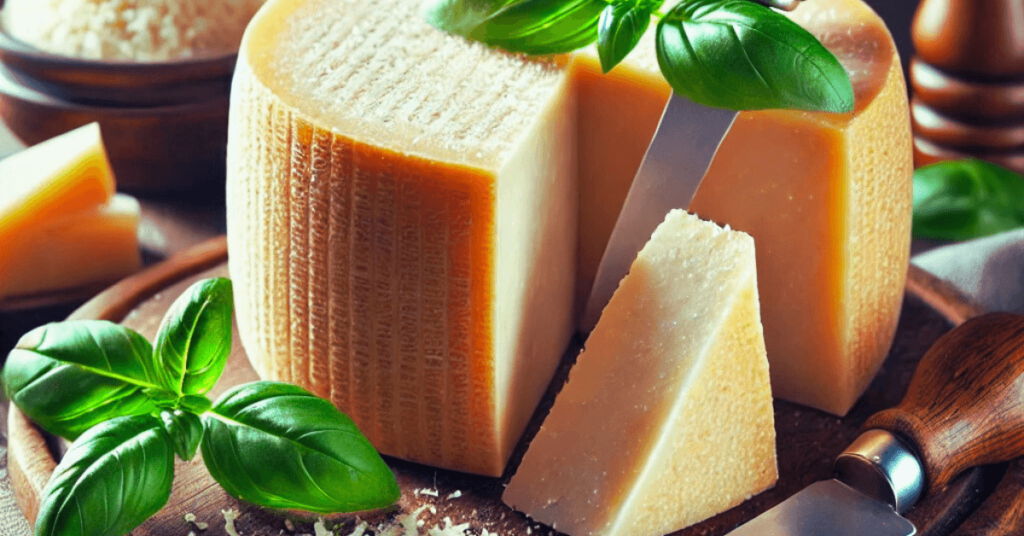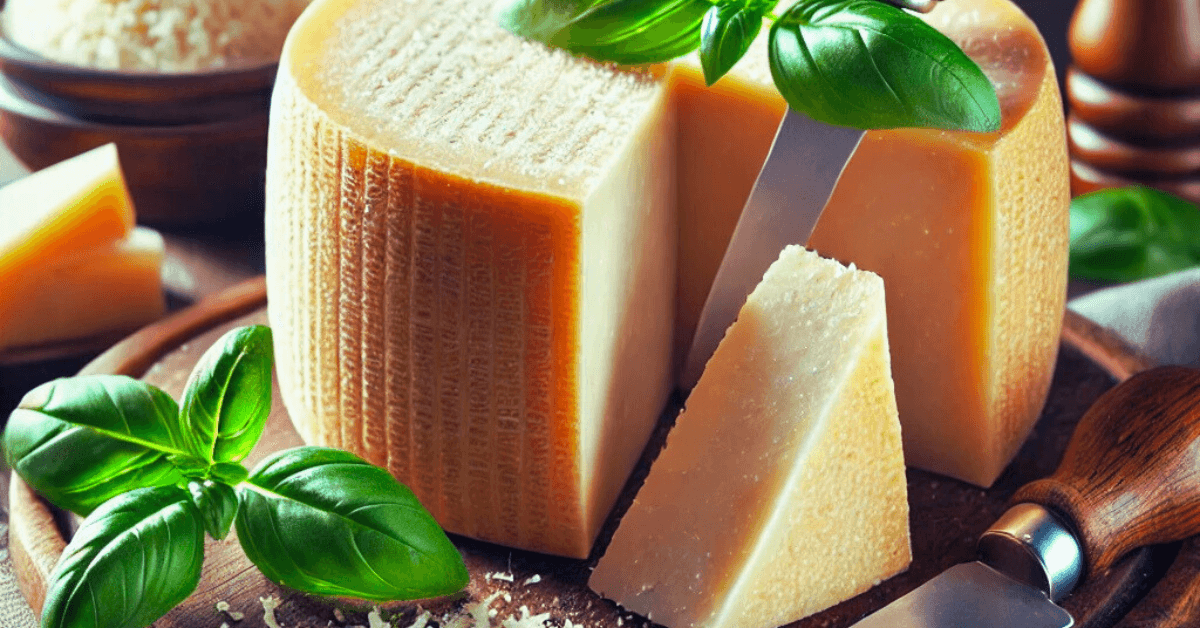What’s Special About Parmesan Cheese? A Deep Dive into This Iconic Dairy Delight
Parmesan cheese is one of the most beloved and widely used cheeses in the world. Whether sprinkled over pasta, blended into sauces, or enjoyed on its own, Parmesan cheese has a distinctive flavor and texture that sets it apart from other cheeses. But what’s special about Parmesan cheese? In this comprehensive guide, we’ll explore what makes Parmesan cheese unique, how it’s made, and why it remains a staple in kitchens worldwide.

The Origin of Parmesan Cheese: A Heritage of Excellence
Parmesan cheese, officially known as Parmigiano-Reggiano, has a rich history that dates back over 900 years. Originating in Italy, this cheese is still produced using traditional methods that have been passed down for generations.
1. Authenticity and Protected Designation of Origin (PDO)
One of the most special things about Parmesan cheese is its protected status. True Parmigiano-Reggiano can only be made in specific regions of Italy, including Parma, Reggio Emilia, Modena, and parts of Bologna and Mantua. The PDO designation ensures that every wheel of Parmesan cheese meets strict quality standards and follows traditional production methods.
2. Traditional Craftsmanship
Each wheel of Parmesan cheese is crafted by skilled artisans who use raw cow’s milk, natural whey, and rennet to create a cheese that is aged to perfection. This meticulous process is what gives Parmesan cheese its distinct taste and texture.
The Unique Flavor Profile of Parmesan Cheese
What’s special about Parmesan cheese is its complex and robust flavor profile. Unlike many other cheeses, Parmesan cheese is aged for an extended period, which enhances its taste and texture.
1. Aged to Perfection
Parmesan cheese is aged for a minimum of 12 months, but some wheels are aged for up to 36 months or more. As it ages, the cheese develops deep, nutty, and savory flavors that make it irresistible.
2. Crystalline Texture and Umami Flavor
Another defining characteristic of Parmesan cheese is its grainy texture, which comes from the natural formation of tyrosine crystals. These tiny crystals contribute to the cheese’s slightly crunchy feel and add an extra layer of umami-rich taste.
3. Versatile Taste for Culinary Use
Parmesan cheese’s bold and savory flavor makes it one of the most versatile cheeses in the world. It can be used as a topping, an ingredient, or even enjoyed on its own with a glass of wine.
The Nutritional Benefits of Parmesan Cheese
Beyond its exquisite taste, Parmesan cheese also boasts impressive nutritional benefits. If you’re wondering what’s special about Parmesan cheese from a health perspective, here are some key highlights:
1. High in Protein and Calcium
Parmesan cheese is an excellent source of protein, making it a great addition to a balanced diet. It also contains high levels of calcium, which is essential for strong bones and teeth.
2. Naturally Lactose-Free
One of the lesser-known facts about Parmesan cheese is that it is naturally lactose-free due to its long aging process. This makes it a suitable cheese option for those with lactose intolerance.
3. Rich in Essential Vitamins and Minerals
Parmesan cheese contains important vitamins and minerals such as vitamin A, B12, and zinc, all of which contribute to overall health and well-being.
How Parmesan Cheese is Used in Cooking
Parmesan cheese is a culinary powerhouse, used in a wide range of dishes across different cuisines. Here are some of the most popular ways Parmesan cheese is incorporated into meals:
1. Classic Pasta Dishes
Parmesan cheese is a must-have ingredient in many Italian pasta dishes, such as spaghetti carbonara, fettuccine Alfredo, and lasagna. The cheese’s umami-rich flavor enhances the overall taste of the dish.
2. Salad Enhancer
From Caesar salads to arugula and walnut salads, Parmesan cheese adds a deliciously salty and nutty element to fresh greens.
3. Soups and Risottos
Grated Parmesan cheese is often stirred into soups and risottos to add depth and creaminess.
4. Snacking and Cheese Boards
Parmesan cheese can also be enjoyed on its own or as part of a cheese board, paired with nuts, honey, and fruit.
5. Gourmet Seasoning
Finely grated Parmesan cheese can be sprinkled over roasted vegetables, mashed potatoes, and even popcorn for an extra burst of flavor.
The Difference Between Parmesan Cheese and Parmigiano-Reggiano
A common question is whether Parmesan cheese and Parmigiano-Reggiano are the same. While both are delicious, there are some key differences:
- Parmigiano-Reggiano: This is the authentic, PDO-certified cheese made in Italy following strict guidelines.
- Parmesan Cheese: In other parts of the world, Parmesan cheese may not adhere to the same aging and production standards, meaning the flavor and texture can vary.
- Taste and Texture: Authentic Parmigiano-Reggiano is aged longer and has a more complex, nutty, and umami-rich taste compared to generic Parmesan cheese.
Interesting Facts About Parmesan Cheese
To truly appreciate what’s special about Parmesan cheese, here are some fascinating facts:
- Each wheel of Parmesan cheese weighs around 80 pounds.
- Parmesan cheese rinds are edible and can be used to flavor soups and sauces.
- It takes approximately 131 gallons of milk to make one wheel of Parmesan cheese.
- Parmesan cheese was mentioned in historical records as early as the 13th century.
How to Store and Preserve Parmesan Cheese
To keep Parmesan cheese fresh and flavorful, proper storage is essential. Here’s how you can store it correctly:
- Wrap it in Parchment Paper – Avoid plastic wrap, as it can trap moisture and lead to mold.
- Store in an Airtight Container – This helps retain freshness and prevents odors from affecting the cheese.
- Refrigerate Properly – Keep Parmesan cheese in the refrigerator at a consistent temperature.
- Freeze for Long-Term Storage – If you have extra Parmesan cheese, you can freeze it in grated or block form for up to six months.
Final Thoughts: What’s Special About Parmesan Cheese?
Parmesan cheese is more than just a tasty topping—it’s a culinary masterpiece with a rich history, unique production methods, and a distinctive flavor that enhances countless dishes. Whether you enjoy it melted into pasta, grated over salads, or eaten on its own, Parmesan cheese is truly special. Its combination of flavor, nutrition, and versatility makes it a must-have ingredient for any food lover. Next time you use Parmesan cheese, take a moment to appreciate the craftsmanship and tradition behind every bite.

